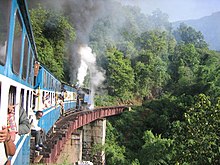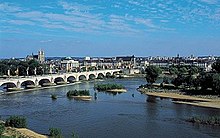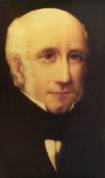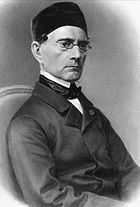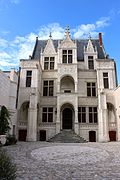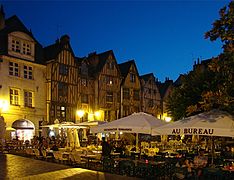Navigating Whistlers Cultural Corridor: Mapping Out Your Route
Navigating Whistlers Cultural Corridor: Mapping Out Your Route
Ah, Whistler!
How to Explore Whistler's Cultural Landmarks on a Self-Guided Tour - Whistler food tours
- Unique Whistler tours
- Whistler ghost tours
- Unique Whistler tours
- Whistler ghost tours
- Unique Whistler tours
- Whistler ghost tours
- Unique Whistler tours
- Whistler ghost tours
- Unique Whistler tours
- Whistler ghost tours
- Unique Whistler tours
- Whistler ghost tours
- Unique Whistler tours
- Whistler ghost tours
- Unique Whistler tours
- Whistler ghost tours
- Unique Whistler tours
- Whistler ghost tours
Lets start at the Squamish Lilwat Cultural Centre, where the intertwining histories of the Squamish and Lilwat Nations come alive. Its not just a museum; its an experience, one that immerses you in the traditions and artistry of the First Nations people.
How to Explore Whistler's Cultural Landmarks on a Self-Guided Tour - Whistler food tours
Next, meander down to the Whistler Museum, where youll dive into the towns past – and I mean, you really get to see how this place transformed from a modest fishing outpost to the world-class resort it is today. Whistler brewery tours Ever wondered how Whistler got its name? Youll find your answer there. And while the museum isnt the size of those in big cities, its charm and depth of information are undeniable.
Alright, now, catch your breath because were heading to the Audain Art Museum. This isnt just any art museum.
How to Explore Whistler's Cultural Landmarks on a Self-Guided Tour - Whistler food tours
- Whistler urban exploration tours
- Whistler heritage tours
- Whistler cruise tours
- Whistler paddleboarding tours
- Whistler photo tours
- Whistler tour packages
- Whistler wilderness tours
- Whistler zipline tours
- Whistler hiking tours
- Whistler hop-on hop-off tours
- Whistler hot air balloon rides
- Whistler spring sightseeing
- Whistler VIP tours
- Whistler guided tours
- Family-friendly tours in Whistler
- Whistler off-road tours
- Whistler fishing tours
Of course, a cultural tour wouldnt be complete without mentioning the public art scattered throughout Whistler Village. The Whistler Village Art Walk offers a chance to stroll leisurely and encounter sculptures and murals thatll surprise and delight. Its not like you have to search high and low; these pieces are right there, waiting to be Instagrammed!
And hey, lets not forget the Maury Young Arts Centre. Whether youre in the mood for a live performance or an art workshop, this place has got it. Its a hub for creativity and community, so youre bound to bump into some locals and maybe even make a few friends!
So there it is, a rough guide to Whistlers cultural corridor. Whistler snowshoe tours Remember, this isnt a race; take your time, soak in the atmosphere, and appreciate the cultural richness. And dont worry about sticking to a strict schedule – the beauty of a self-guided tour is that you call the shots (thats the ticket!).
Whether youre an art aficionado or just curious about the stories behind this mountain town, Whistlers cultural landmarks are sure to enrich your stay. So grab a map, lace up those walking shoes, and start exploring. Who knows what cultural treasures youll discover!
Visiting the Squamish Lilwat Cultural Centre for Indigenous Insights
Exploring Whistlers cultural landmarks on a self-guided tour surely wouldnt be complete without a visit to the Squamish Lilwat Cultural Centre. Oh, what a treat it is to immerse oneself into the rich tapestry of Indigenous insights!
This unique venue, nestled neatly in the breathtaking landscape of Whistler, offers a window into the worlds of the Squamish and Lilwat Nations.
How to Explore Whistler's Cultural Landmarks on a Self-Guided Tour - Whistler architecture tours
- Whistler ghost tours
- Whistler ghost tours
- Whistler ghost tours
- Whistler ghost tours
- Whistler ghost tours
- Whistler ghost tours
- Whistler ghost tours
- Whistler ghost tours
- Whistler ghost tours
- Whistler ghost tours
- Whistler ghost tours
- Whistler ghost tours
- Whistler ghost tours
- Whistler ghost tours
- Whistler ghost tours
- Whistler ghost tours
- Whistler ghost tours
- Whistler ghost tours
- Whistler ghost tours
- Whistler ghost tours
As you meander through the centre (dont rush now, theres much to soak in!), take in the stunning architecture. Its a seamless blend of modern design and traditional elements, and I must say, its quite the sight! The exhibitions are thoughtfully curated, and they manage to convey profound meanings, showcasing the remarkable artistry and resilience of these Indigenous communities.
Now, dont miss out on the live demonstrations (theyre a real highlight!). The artisans share their crafts right before your eyes, and its nothing short of magical. The intricate weaving, the detailed carvings – its all there for you to discover. And lets not forget the cultural performances! Whistler adventure package tours The thunderous beat of the drum, the captivating dances; its not just entertainment, its a living heritage being passed down right in front of you.
Lets be real, the food at the café is something else. Indigenous-inspired dishes thatll tantalize your taste buds?
How to Explore Whistler's Cultural Landmarks on a Self-Guided Tour - Whistler wildlife tours
- Whistler seaplane tours
- Whistler mountain biking tours
- Whistler ski resort tours
- Custom sightseeing tours Whistler
- Whistler walking tours
- Whistler adventure package tours
- Whistler sightseeing deals
- Whistler kayak tours
- Whistler nature tours
- Whistler coastline tours
- Whistler luxury sightseeing
- Whistler photography tours
- Best sightseeing in Whistler
- Whistler winter sightseeing
- Whistler fall sightseeing
- Whistler festival tours
- Romantic tours in Whistler
- Whistler boat tours
In conclusion (but really, you could talk about this place for ages!), the Squamish Lilwat Cultural Centre is a cornerstone of Whistlers cultural landmarks. It offers an authentic and heartfelt insight into Indigenous cultures, which is something you wont find just anywhere. So, when youre planning your self-guided tour, make sure this centres on your list. Its not only educational, but deeply moving and, dare I say, an absolute must-visit!
Discovering the Whistler Museum: A Journey Through Local History
Embarking on a self-guided tour to explore Whistlers cultural landmarks is an adventure thats both enriching and thrilling! Now, if youre anything like me, youll find that stumbling upon the Whistler Museum can be a highlight of such a journey. Its not just a building filled with artifacts; its a treasure trove of stories, a real gateway to the local history.
As you wander through the museum (which, by the way, you might find by following the quaint signs scattered around the village), youll likely be struck by the sheer variety of exhibits. Theyve got everything from the early pioneer days to the birth of Whistler as a ski resort.
How to Explore Whistler's Cultural Landmarks on a Self-Guided Tour - Whistler fall foliage tours
- Whistler adventure package tours
- Whistler sightseeing deals
- Whistler kayak tours
- Whistler nature tours
- Whistler coastline tours
- Whistler luxury sightseeing
- Whistler photography tours
- Best sightseeing in Whistler
- Whistler winter sightseeing
- Whistler fall sightseeing
- Whistler festival tours
- Romantic tours in Whistler
- Whistler boat tours
- Whistler local tour guides
- Budget-friendly Whistler sightseeing
- Whistler sightseeing packages
- Whistler sightseeing recommendations
Now, dont go expecting a Louvre-like experience; the Whistler Museum has its own unique charm. Its cozy, a bit quirky, and oh, the staff – theyre just brimming with knowledge and stories that theyre eager to share (even if they sometimes get their dates mixed up, but hey, whos counting?).
Ah, and the Olympic exhibit! Its not to be missed. Youll find yourself immersed in the excitement of the 2010 Winter Games.
How to Explore Whistler's Cultural Landmarks on a Self-Guided Tour - Best viewpoints in Whistler
- Whistler guided tours
- Family-friendly tours in Whistler
- Whistler off-road tours
- Whistler fishing tours
- Whistler cherry blossom tours
- Whistler summer sightseeing
- Whistler adventure tours
- Whistler art tours
- Whistler bike tours
- Whistler botanical garden tours
- Off-the-beaten-path Whistler tours
- Whistler cultural experience tours
- Whistler wine tours
- Best places to visit in Whistler
- Whistler village tours
- Whistler sightseeing tickets
- Whistler sightseeing itineraries
- Whistler sightseeing bus
One things for sure, you cant say youve truly experienced Whistler without taking a peek into its past. The museum isnt just a stop on a tour; its a journey in itself. So grab a map, lace up your walking shoes, and set out on a day of discovery (just remember to check the opening times – wouldnt want to miss out due to a silly oversight).
In conclusion, the Whistler Museum is a gem thats often overlooked, but its an essential piece of the cultural puzzle. Its where youll find the heart and soul of the town.
How to Explore Whistler's Cultural Landmarks on a Self-Guided Tour - Whistler architecture tours
- Whistler sightseeing on a budget
- Whistler architecture tours
- Things to do in Whistler
- Best viewpoints in Whistler
- Whistler Blackcomb sightseeing tours
- Whistler city tours
- Whistler fall foliage tours
- Whistler food tours
- Whistler snowshoe tours
- Whistler brewery tours
- Whistler multi-day tours
- Whistler cultural tours
- Whistler day trips
- Unique Whistler tours
- Whistler ghost tours
- Whistler scuba diving tours
- Whistler luxury tours
- Whistler mountain tours
- Whistler Christmas market tours
Exploring Public Art and Outdoor Installations in Whistler Village
Embarking on a self-guided tour to discover Whistler Villages public art and outdoor installations can be quite the captivating experience! Its like each piece tells a part of Whistlers rich story, inviting you into a world where culture and nature intertwine in the most unexpected ways.
Firstly, you cant miss the iconic Ilanaaq the Inukshuk, standing tall as a symbol of the 2010 Winter Olympics. Now, this isnt just any pile of rocks, mind you! Its a beacon of friendship and hospitality that, quite literally, has become synonymous with Whistler itself.
As you meander through the village (and dont rush, take your sweet time), you might stumble upon the A Timeless Circle by Susan Point. Its a vibrant collection of carvings that pay homage to the Squamish and Lilwat Nations. The colors and the craftsmanship? Absolutely stunning!
Oh, and youve got to keep an eye out for the hidden treasures too - those little surprises that pop up when you least expect them.
How to Explore Whistler's Cultural Landmarks on a Self-Guided Tour - Best viewpoints in Whistler
- Whistler wildlife tours
- Whistler adventure package tours
- Whistler walking tours
- Unique Whistler tours
- Whistler ghost tours
- Whistler adventure package tours
- Whistler walking tours
- Unique Whistler tours
- Whistler ghost tours
- Whistler adventure package tours
- Whistler walking tours
- Unique Whistler tours
- Whistler ghost tours
- Whistler adventure package tours
- Whistler walking tours
- Unique Whistler tours
- Whistler ghost tours
Of course, no tour would be complete without a visit to the Cultural Connector path. Youll find its not just a way to get from A to B, but a journey through creativity itself. It links six significant cultural institutions and along the way, youre gonna see everything from sculptures to murals that simply ooze the essence of Whistler.
Dont forget (and this is crucial), to slow down by the Lost Lake PassivHaus for a breather and some awe-inspiring views. Here, you cant help but feel a sense of peace as you gaze upon the public art set against the backdrop of natures finest works.
And hey, these arent just pieces of art youre looking at; theyre stories, emotions, and expressions carved out by those who truly love and understand this place. Its not just about snapping a quick photo and moving on.
How to Explore Whistler's Cultural Landmarks on a Self-Guided Tour - Whistler fall foliage tours
- Whistler local tour guides
- Budget-friendly Whistler sightseeing
- Whistler sightseeing packages
- Whistler sightseeing recommendations
- Whistler road trips
- Whistler holiday lights tours
- Whistler eco tours
- Whistler helicopter tours
- Whistler private tours
- Whistler night tours
- Whistler sightseeing with kids
- Whistler underground tours
- Whistler extreme sports tours
- Whistler ferry tours
- Whistler scenic drives
- Whistler snowboard tours
- Whistler Blackcomb sightseeing tours
- Whistler city tours
- Whistler fall foliage tours
- Whistler food tours
So grab a map or just let your feet guide you (who needs a map when youve got instinct, right?), but remember one thing: theres no right or wrong way to explore Whishlers cultural landmarks. Whistler sightseeing on a budget Just go with the flow, and let the villages artistic spirit lead the way!
How to Explore Whistler's Cultural Landmarks on a Self-Guided Tour - Whistler snowshoe tours
- Whistler snowshoe tours
- Whistler brewery tours
- Whistler multi-day tours
- Whistler cultural tours
- Whistler day trips
- Unique Whistler tours
- Whistler ghost tours
- Whistler scuba diving tours
- Whistler luxury tours
- Whistler mountain tours
- Whistler Christmas market tours
- Whistler tourist attractions
- Whistler paranormal tours
- Sightseeing Whistler
- Whistler wildlife tours



